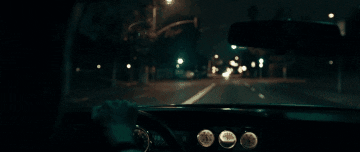What do you think?
Rate this book


158 pages, Paperback
First published September 1, 2005






āWhatād you need?" {Manny}
"Desuetude." {Driver}
"Reading again, are we? Could be dangerous. It means to become unaccustomed to. As in something gets discontinued, falls into disuse."
"Thanks, man."
"That it?"
"Yeah, but we should grab a drink sometime.ā�

"Driver'd been out three days before to get a car. He always picked his own car. The cars weren't stolen, which was the first mistake people made, pros and amateurs alike. Instead, he bought them off small lots. You looked for something bland, something that would fade into the background. But you also wanted a ride that could get up o its rear wheels and paw air if you needed it to. Himself, he had a preference for older Buick's, mid-range, some shade of brown or gray, but he wasn't locked in. This time what he found was a ten-year-old Dodge. You could run this thing into the side of a tank with no effect. Drop anvils on it, they'd bounce off. But when he turned the motor over, it was like this honey was just clearing its throat, getting ready to talk"
"Desperate times, desperate measures.
Well out of the city, out where the first of a crop of white windmills, lazily turning, wound sky down to desert, Driver sailed without warning onto an exit ramp and into a one-eighty. Sat facing back the way he'd come as the Mustang raced towards him.
Then he hit the gas."
Much later, as he sat with his back against an inside wall of a Motel 6 just north of Phoenix, watching the pool of blood lap toward him, Driver would wonder whether he had made a terrible mistake. Later still, of course, there'd be no doubt. But for now Driver is, as they say, in the moment. And the moment includes this blood lapping toward him, the pressure of dawn's late light at windows and door, traffic sounds from the interstate nearby, the sound of someone weeping in the next room.

 Although I won't lie, that face definitely helps. Oof.
Although I won't lie, that face definitely helps. Oof.